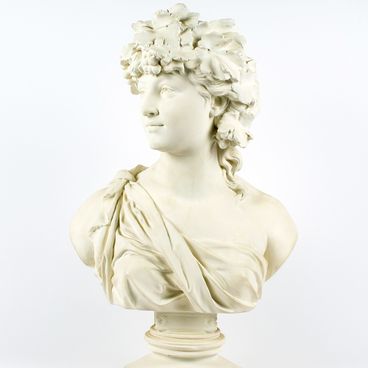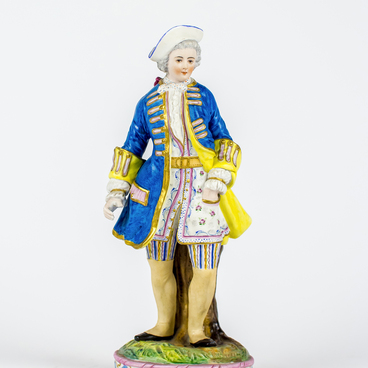In the houses of the bourgeoisie and merchants in the 1820s, luxurious Empire-style furniture was replaced by more modest Biedermeier furniture. It was the name of the artistic movement in German and Austrian art, which arose in 1815—1848.
The name of the style came from a pun: “Biedermann” — a simpleton, a simple-minded, naive person, and the surname “Maier”. In 1848, German poet Joseph von Scheffel published two poems: “Biedermanns Abendgemütlichkeit” (Biedermann’s Evening Comfort) and “Bummelmaiers Klage” (“Bummelmaier’s Complaint”). In 1850, his colleague Ludwig Eichrodt made a pseudonym out of the two words, under which he began to publish sentimental and simple poems in the spirit of the bourgeois and sentimental art of the German-Austrian province.
When creating interior items in the Biedermeier style, the main attention was paid to comfort and coziness. Such furniture was appreciated for the utility, solidity, and beauty of the wood from which it was made. Items in this style were, as a rule, small and had a harmonious shape. They were not characterized by strident decor. Masters emphasized the beautiful texture of plywood of different breeds: mahogany, birch, pear.
The furniture was decorated with pierced carving and flat carving, with cutout patterns, profiles, with colonnettes, and covered with paintings. The company “Gambs” introduced walnut furniture with simplified and generalized Rococo ornamentation.
The armchair presented in the exhibition was located in the house of the Sokolov doctors. Nina Sokolova, an honored doctor of the TASSR and a recipient of the Order of Lenin, was elected a deputy of the Supreme Council of the TASSR of three convocations. She graduated from the Petrograd Women’s Medical Institute with the degree of doctor in 1916 and came to the town of Tetyushi, where she mastered the profession of an obstetrician-gynecologist. From 1937 to 1959, Nina Sokolova was in charge of the maternity section, and in 1959 she retired.
The doctor’s husband Nikolay Sokolov graduated from the Medical Faculty of Kazan University in 1914. After studying, he was sent to Tetyushi, where he worked as a general practitioner. After retraining, he mastered the technique of performing eye and ORT surgeries. Nikolay Sokolov worked as the head doctor of the Tetyushi District hospital for several years, and in 1945 he was awarded the titles of Honored Doctor of the TASSR and Honored Doctor of the RSFSR. For his services in the field of medicine, he was awarded the Order of Lenin and medals of the USSR.
The name of the style came from a pun: “Biedermann” — a simpleton, a simple-minded, naive person, and the surname “Maier”. In 1848, German poet Joseph von Scheffel published two poems: “Biedermanns Abendgemütlichkeit” (Biedermann’s Evening Comfort) and “Bummelmaiers Klage” (“Bummelmaier’s Complaint”). In 1850, his colleague Ludwig Eichrodt made a pseudonym out of the two words, under which he began to publish sentimental and simple poems in the spirit of the bourgeois and sentimental art of the German-Austrian province.
When creating interior items in the Biedermeier style, the main attention was paid to comfort and coziness. Such furniture was appreciated for the utility, solidity, and beauty of the wood from which it was made. Items in this style were, as a rule, small and had a harmonious shape. They were not characterized by strident decor. Masters emphasized the beautiful texture of plywood of different breeds: mahogany, birch, pear.
The furniture was decorated with pierced carving and flat carving, with cutout patterns, profiles, with colonnettes, and covered with paintings. The company “Gambs” introduced walnut furniture with simplified and generalized Rococo ornamentation.
The armchair presented in the exhibition was located in the house of the Sokolov doctors. Nina Sokolova, an honored doctor of the TASSR and a recipient of the Order of Lenin, was elected a deputy of the Supreme Council of the TASSR of three convocations. She graduated from the Petrograd Women’s Medical Institute with the degree of doctor in 1916 and came to the town of Tetyushi, where she mastered the profession of an obstetrician-gynecologist. From 1937 to 1959, Nina Sokolova was in charge of the maternity section, and in 1959 she retired.
The doctor’s husband Nikolay Sokolov graduated from the Medical Faculty of Kazan University in 1914. After studying, he was sent to Tetyushi, where he worked as a general practitioner. After retraining, he mastered the technique of performing eye and ORT surgeries. Nikolay Sokolov worked as the head doctor of the Tetyushi District hospital for several years, and in 1945 he was awarded the titles of Honored Doctor of the TASSR and Honored Doctor of the RSFSR. For his services in the field of medicine, he was awarded the Order of Lenin and medals of the USSR.



